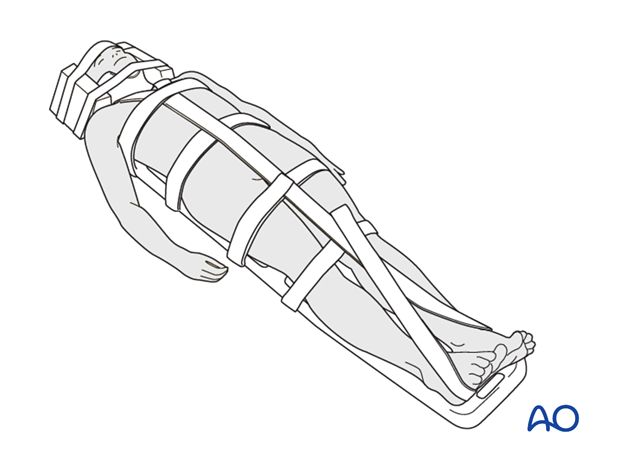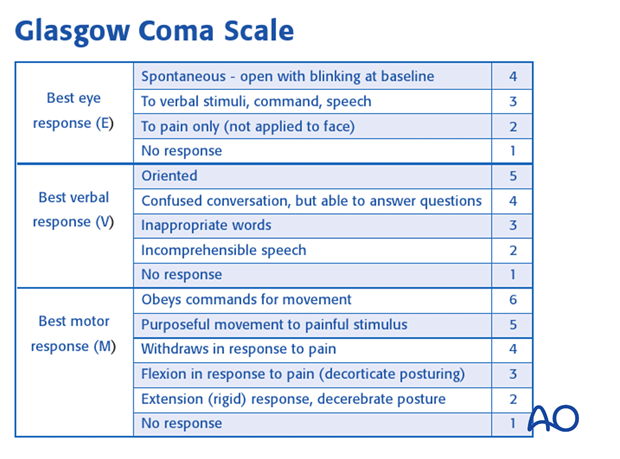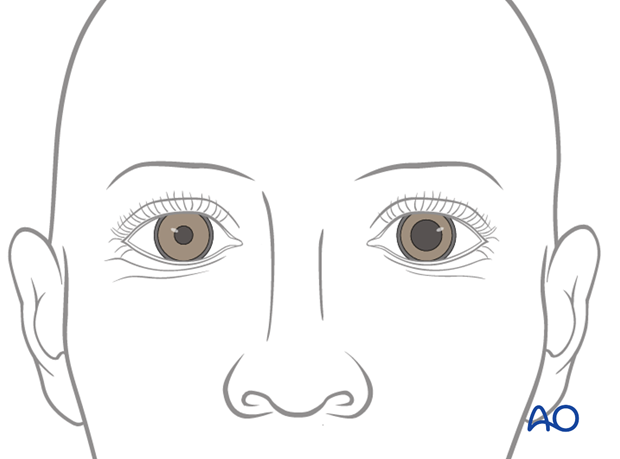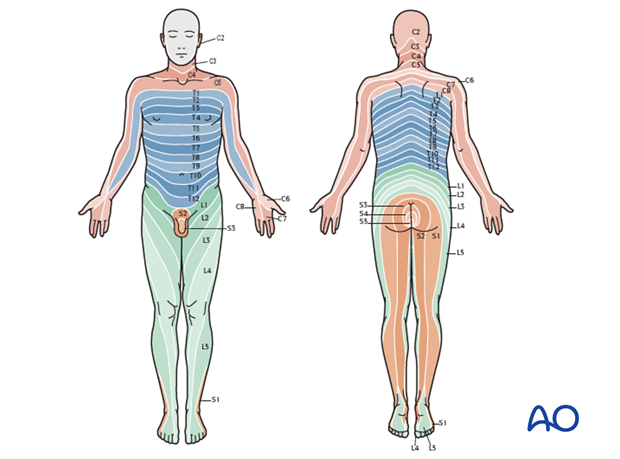Disability
1. Note
Rapid neurological evaluation should be performed in all polytrauma patients by establishing the level of consciousness, pupillary size and reaction, and screening for spinal cord injuries.
In the meantime, the patient is completely immobilized using head blocks, cervical collar, and long spine board.

2. Level of consciousness
The patient is examined with regard to:
- Eye response
- Verbal response
- Motor response
The patient's best response for each of the three categories (to verbal or painful stimulus) is noted and scored using the Glasgow Coma Scale.
If the total score is 8 or less, the patient is comatose. Such patients do not have a safe airway. They need endotracheal intubation with protection of the cervical spine.
Repeated assessment of consciousness using the Glasgow Coma Scale is used to follow the level of consciousness. If deterioration is observed, a CT scan of the brain should be obtained and neurosurgical consultation is needed.

3. Pupil size
Unequal pupil size can be caused by compression of the third cranial nerve by increased intra-cranial pressure. Dilation of one pupil suggests an ipsilateral intracranial compression.

4. Spinal cord injuries
Patients with an acute spinal cord injury (tetraplegic) are identifiable by the following:
- Absent motor response to painful stimuli of arms and legs (quadriplegia) or only legs (paraplegia)
- Absence of skin sensation below a dermatomal level of injury
- Absence of anal sphincter tone
Quadriplegic patients may have reduced sympathetic nervous tone with hypotension, bradycardia, and vasodilation.
High quadriplegia may affect phrenic nerve function and lead to hypoventilation
Adequate fluid management, vasopressor medication and support of ventilation are the necessary treatments.














